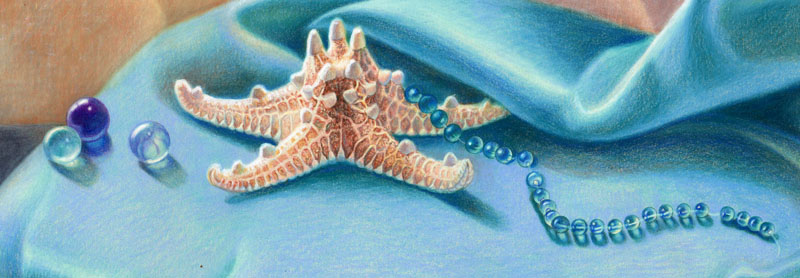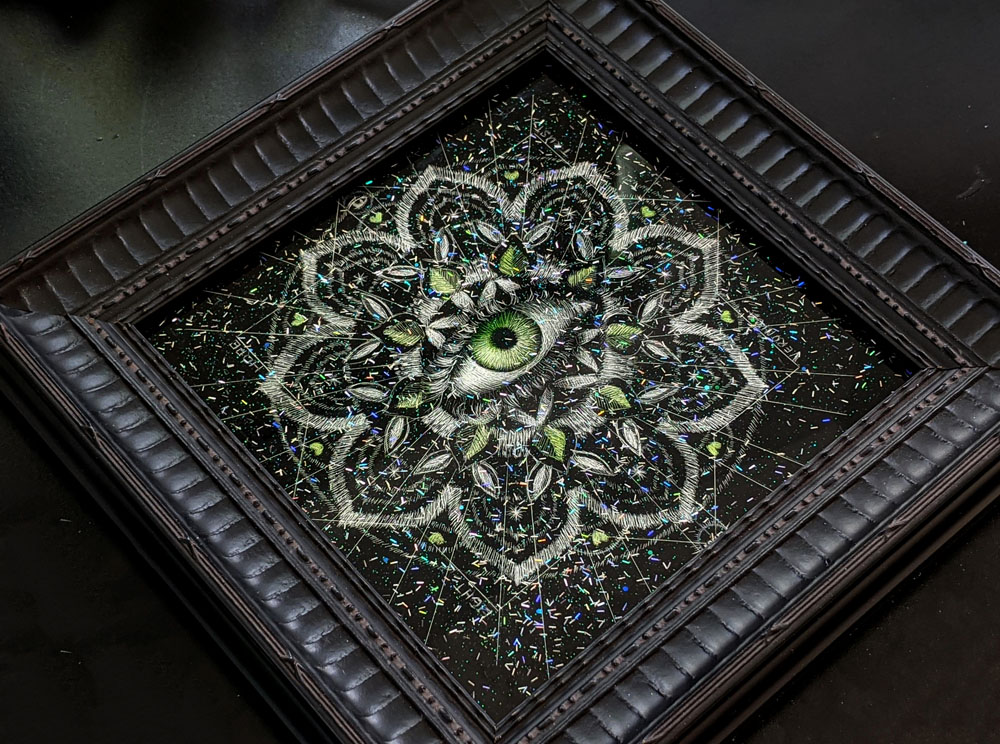I’ve decided to write this article because many artists want to find answers to this dilemma and think of sales as some sort of miracle that needs to happen. The advice you’ll find here is based on my experience being a full-time artist since 2005. While I’m always on a look out for new art marketing ideas as I need to improve my art sales, I’ve realized that I figured out a lot of things on my own that I can share with other artists today. It took me many years to understand the business of art, and if I had a mentor or the right person to talk to, setting up and advancing my career wouldn’t be as difficult as it’s been for me thus far. So this post is a note I could have given to myself 2 decades ago.
A lot of artists start doing art marketing by approaching the art galleries from the get go because selling art is not easy, and while it can work, there is a lot you can do to advance your career without gallery representation. Galleries close left and right, and the established galleries would take your art, if they’re sure they have the clientele to sell it to.
Don’t quit your day job that brings you mental and financial stability but try to pursue your artistic career with more purpose, so when the time comes, you’re able to quit your job without hesitation. In my case, I have several income streams and the most reliable one comes from teaching privately.

So here are the top 17 steps to sell your art:
1. Be confident & believe in yourself
This is the most important thing to master in any career, especially art. The only substitute for talent is confidence. If you don’t believe in yourself and feel unsure about your own artwork, people won’t buy anything from you. You must be eloquent talking about your art in words people can relate to. Talking about ideas and feelings as opposed to materials and techniques makes sense to most people. I know artists who sell really well not because of quality art but because of their confidence. Watch a documentary about Jean-Michel Basquiat. He began his career as a homeless person in New York and ended up selling his art for thousands of dollars while being in his 20-s. Amazing!
2. Help others and network
This is the second most important step to find sales. I find it to be the hardest to pursue, but I also have to admit that Networking is incredibly important! It can propel your career fairly quickly, if you’re able to socialize in the right circles and sell your confidence to others. But it’s also important to know that not every event is yours and that selfishness won’t get you far. Help others. Take time to know the other person before asking for something in return. I think long-term relationships are friendships. And friendships are not easy to acquire and maintain for many of us. Be honest, authentic and giving, even if it doesn’t work out, but stay away from negative people who bring you down every time you see them.
3. Find a mentor!
Find a mentor who is a successful artist in your field. This is a giant building block I’ve been missing in my career. It’s so incredibly important to find this person who can be supportive of your talent, and teach you everything you need to know to become successful. Sometimes college teachers take on this role, but I think in order to build a real career, you must connect with the artist who does sold out shows, exhibits nationally and internationally and just knows ins and outs of art business. Mentorship will also keep you accountable if you get sidetracked. If you connect with the right person you admire and respect, please don’t waste his/her time on small tasks. You need to be proactive and independent, work in his/her workshop/studio and learn from that experience!

4. Always be in growth mode mindset
A lot of artists get frustrated and stuck after receiving a rejection. I agree it’s very hard, but I also learned to accept the fact that my art is not for everyone and any art contest is a gamble. I always look at the winners to understand if I can improve my craft. Also, I’ve learned to be picky about the art contests and shows themselves. A lot of them are not worth your time and money because they’re like vanity galleries. They make money on your paid fees. To participate in good and relevant contests, your art must be good to plow through competition.
5. Publicity must be consistent focus
Every artist hopes to get discovered somehow. This is a silly hope, considering how much noise we have in this world. I submit my art to publications regularly and always get excited when it gets noticed. It’s also a gamble but a lot of opportunities are free in comparison to art contests, and can actually help you sell art. If you’re an emerging artist, begin making submissions locally, and also consider free online publications. The larger the magazine, the harder it would be to get into it, but its readership brings new clients and opportunities. What I discovered by looking at opportunities in the Submittable database, many obscure literature magazines actually pay a publication fee to the artist. It’s not huge and runs between $25-100 for one artwork but it’s a lot better than nothing or worse, paying the fee to be published.
6. Working on your craft is a must
Well, if you’re satisfied with your work 100% all the time, it leaves very little room for improvement. Be excellent in your art form. It attracts serious art collectors to your art and it builds your own confidence!
7. Define what you do and what makes you different from everyone else
This one is not as easy as it sounds. It took me years to find my voice: to understand what I wanted to paint, why and how. Come up with a two-sentence elevator pitch to describe your art. This process of thinking to describe your art in just one line helps a great deal to narrow down what you can paint and what makes you excited to produce as an artist. I used to be all over the place, painting everything that came along my way. While I don’t regret it because I’ve learned so much, I wish I cut on years spent wondering around the bush. This is where clarity in your goals and strategy comes in handy.
8. Dream big, but also remain realistic in your goals
Your dreams must be big. You must be ambitious if your art career is important to you. At the same time, your goals should be doable, measurable and manageable not to get overwhelmed with tasks. I have a timeline and a calendar writing down jobs and events I must do to be on time.
9. Have a strategy, goals and sub goals that have due dates on your calendar
I have one strategy for a year, one big goal for a month and 4 sub goals to achieve that monthly goal. All of them are written down in my calendar.
10. Organize your work schedule that includes 1/3 to 1/2 of your time spent on marketing
Calendar your tasks. I’m a very organized person naturally but I still write them down to stay on top of things. We all have one thing in common-24 hrs in a day. So if you have no time to do what’s important to you, you must prioritize and re-organize your days.
Yes, unfortunately, a lot of time must be reserved for art marketing and that includes writing your newsletters, calling and meeting people, following up, posting to social media regularly, and submitting art to opportunities to be noticed. If you just sit in your studio painting, no one is going to knock on your door. Sorry!
11. Stay focused
Don’t sidetrack yourself with other tasks and opportunities that don’t lead you to your final goal/destination. This is very hard to do because we balance tons of art jobs and family. If you feel overwhelmed, just go back to your board and review your goals and strategy. Sometimes they need adjustment too!
12. Be prompt answering all correspondence and follow up with people yourself
Sometimes I contact artists whose art I could of bought but because they don’t find time to reply to their emails, I move on to another artist. Sometimes I email to artists to write about their art, and get no replies. Of course, it means that they also prioritize what deserves attention and what doesn’t, as we get tons of emails and messages daily. But in my experience, many opportunities came to me because I was quick to reply with answers. I also think it’s a good practice to follow up with people once. It’s very annoying to receive unfocused, unspecific messages from people who don’t value my time, and just keep messaging me for no particular reason. So if you write to someone, please be prompt and specific in your request and always address that person by his first name.
13. Follow other successful artists to understand what they do differently from your routine to increase exposure, publicity and sales
I keep learning every day by reading business books, subscribing to memberships, and following other artists to pick up on their strategies.
14. When you make a sale, under promise and over deliver
Don’t make promises you cannot keep. If you take on a commission, say you’ll be done in 2 months and deliver it in one. If you sell a piece, say you ship it in two weeks but deliver in one week. You get the idea.
15. Avoid scams and ‘for exposure’ venues and opportunities
I can’t even tell you how many scam emails and phone messages I get. These people have become very creative! Don’t pay for wall space, representation or shows. They have no incentive to sell your art because they’ve already covered their costs and made profit at your expense! Hang your art in a local cafe, spa or a bank instead.
16. Collect emails of your art collectors and supporters
Don’t include everyone into your email list, don’t share your list with others, and don’t bother people on your list every day. Communicate to build anticipation about your new projects, share free and relevant information and announce special events, etc.
I reach out to my past art collectors in personal communication and send real cards on special occasions.
17. Live in a fairly big place
While it can be managed, living in a remote area is not great, unless you’re an established artist. If you’re serious about your art career, get out of your small town. Why? It all comes down to networking and networking happens in the city art galleries, events, parties, and art museums.
I’m thinking of inviting other artists to share their ideas and art sales strategies. What do you think? Would you be interested in that? Write to nika@veronicasart.com and let me know your thoughts!


Art supplies on Amazon
- Drawing pad, bristol vellum
- Kneaded eraser
- koh -i-noor drawing paper, colored pencil
- Tombow mono eraser
- Drawing fixative
- Sennelier fixative for charcoal and pencil has a super fine spray mist, matte, high-quality
- Gamvar varnish for oil paintings, satin
- Brush for varnishing oil paintings
- Color Wheel
- Canson Colorline drawing paper is available in many colors and various thickness. You might find better choices at art supply online retailers
- Molotow metallic marker, gold
- How to color like an artist, coloring book for children and adults
- The colored pencil manual, art instruction book